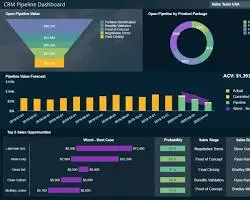Data-Driven Decisions with CRM: Harness the Power of Reporting and Dashboards in 2024

CRM Reporting and Dashboards
In today’s data-centric business landscape, making informed decisions is crucial for success. Customer Relationship Management (CRM) systems are not just tools for managing customer interactions; they are powerful reporting and analytics engines that can transform raw data into actionable insights. By leveraging CRM reporting and dashboards, businesses can track key performance indicators (KPIs), visualize sales performance, and gain a comprehensive understanding of their customer base.
The Importance of Reporting and Dashboards in CRM
Reporting and dashboards are essential for measuring the effectiveness of your sales, marketing, and customer service efforts. They provide a visual representation of key metrics, allowing you to identify trends, track progress towards goals, and make data-driven decisions. Key benefits of CRM reporting and dashboards include:
- Performance Tracking: Monitor sales performance, marketing campaign effectiveness, and customer service metrics to identify areas of strength and weakness.
- Goal Setting and Tracking: Set realistic goals and track progress over time, ensuring your strategies are aligned with your objectives.
- Data Visualization: Visualize complex data in an easy-to-understand format, making it easier to identify trends and patterns.
- Decision-Making: Make informed decisions based on accurate and up-to-date data, reducing the risk of costly mistakes.
- Improved Collaboration: Share reports and dashboards with team members, fostering collaboration and alignment around common goals.
Key CRM Reporting and Dashboard Features
CRM systems offer a wide range of reporting and dashboard features to help businesses gain insights into their operations. Some key features include:
- Customizable Dashboards: Create personalized dashboards that display the most relevant metrics for your role and responsibilities.
- Sales Reports: Track sales performance, including revenue, pipeline, win/loss ratios, and individual sales rep performance.
- Marketing Reports: Measure the effectiveness of your marketing campaigns, including email open rates, click-through rates, conversions, and ROI.
- Customer Service Reports: Monitor customer satisfaction, response times, resolution rates, and other key service metrics.
- Predictive Analytics: Leverage machine learning algorithms to forecast future trends and identify potential opportunities or risks.
Best Practices for CRM Reporting and Dashboards
To maximize the value of your CRM reporting and dashboards, consider these best practices:
- Identify Key Metrics: Determine the most important KPIs for your business and focus your reporting efforts on tracking those metrics.
- Customize Your Dashboards: Tailor your dashboards to display the most relevant information for your role and responsibilities.
- Set Goals and Benchmarks: Establish clear goals for your sales, marketing, and customer service efforts and use dashboards to track progress towards those goals.
- Regularly Review Your Data: Set aside time to review your reports and dashboards on a regular basis to identify trends, opportunities, and areas for improvement.
- Share Insights with Your Team: Share relevant reports and dashboards with your team members to foster collaboration and ensure everyone is working towards common goals.
Conclusion
CRM reporting and dashboards are essential tools for businesses that want to make data-driven decisions and drive growth. By leveraging the power of CRM analytics, you can gain valuable insights into your customers, sales, marketing, and customer service operations. Embrace data-driven decision-making in 2024 and beyond, and watch your business thrive.

Fundamentals of CRM with Dynamics 365 and Power Platform

Marketing Automation For Dummies

Successful Direct Marketing Methods: Interactive, Database, and Customer-based Marketing for Digital Age (BUSINESS BOOKS)

CRM & FFHH: analysis of real accidents

Connected CRM: Implementing a Data–Driven, Customer–Centric Business Strategy

Special Edition Using Microsoft CRM
Related Guides: See all
- AI-Powered CRM: Supercharging Customer Relationships with Intelligent Automation and Predictive Insights in 2024
- Omnichannel Engagement with CRM: Crafting Seamless Customer Journeys in 2024
- Personalization Powerhouse: How CRM Drives Customer-Centric Experiences in 2024
- Customer Segmentation Mastery with CRM: Unlock Personalized Marketing and Sales Strategies in 2024
- Mastering the Customer Journey with CRM: Elevate Experiences and Boost Loyalty in 2024
- Social CRM: Building Stronger Customer Relationships Through Social Media in 2024
- Cloud CRM: Revolutionizing Business Agility and Scalability in 2024
- Mobile CRM: Empowering Sales and Service Teams on the Go in 2024
- CRM Integration and API: Unifying Your Business Ecosystem for Seamless Operations in 2024